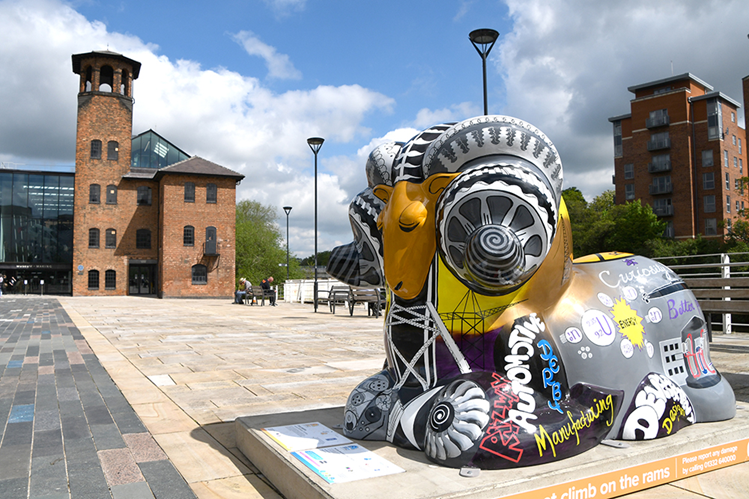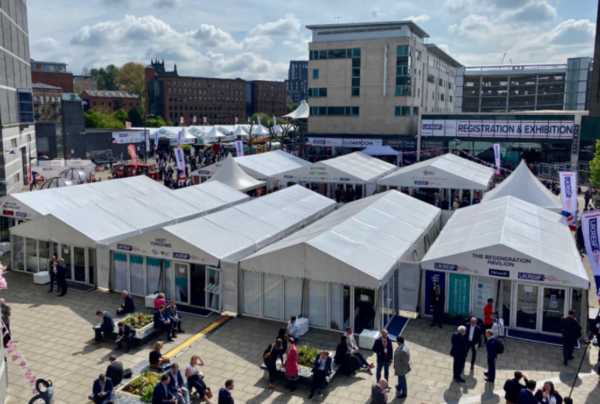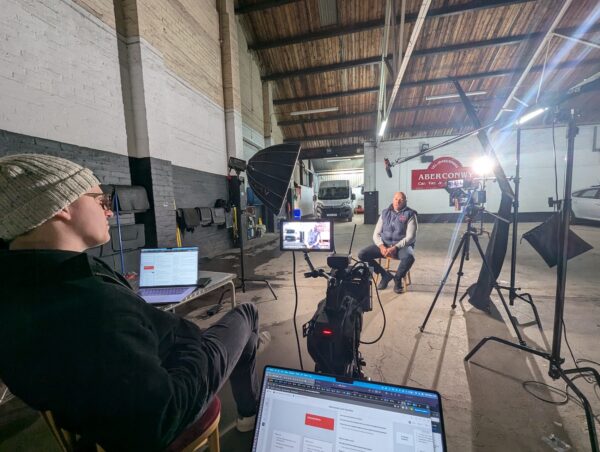Latest News | 15 February 2022
Derby Ram Trail report shows that culture is fundamental to city

A new report has revealed the positive impact made by the Derby Ram Trail on the city’s recovery following lockdown.
Launched in May last year, the free sculpture trail of 30 colourful rams was delivered by Derby Museums in partnership with Wild in Art, the Cathedral Quarter and the St Peters Quarter, as the city emerged from the final Covid lockdown.
The new report, published by Derby Museums, details the trail’s positive impact across several areas, strengthening the case for culture as a key driver in making Derby a vibrant place to live, work, visit and invest.
Among the key findings is that the trail is estimated to have contributed £1.4 million to the local economy, while footfall was boosted with over 50% of people surveyed visiting the city more than once to complete the trail.
Tony Butler, executive director at Derby Museums, said: “Bringing the Ram Trail to Derby has been a great way to galvanise local businesses and artists to create a fun and accessible focus in the city centre at a time when it was needed the most. After an arduous lockdown, the trail helped many people to reconnect and rediscover their city.
“The impact of the trail, led by Derby Museums, on the city’s recovery proves the incredibly important part culture has to play in the life of a city.”
According to the report, over 32,000 trail maps were distributed, and 7,840 downloads made of the Ram Trail app, which was created by Bloc Digital.
The trail brought people and communities together. As well as those who took part in the trail, a further 4,050 children from 21 Derby schools took part in the Mini Ram competition.
Thirty-two sponsors and 28 artists (14 of whom were East Midlands-based) were involved, as well as 14 volunteers who generously gave 285 hours to the project.
The report found that the trail had been encouraged people to visit different places they had not been to before. Over 70% said the trail had inspired them to consider another visit to Derby.
In a joint statement, Martin Langsdale MBE, chair of the Cathedral Quarter BID and Helen Wathall MBE, chair of St Peters Quarter BID, said: “The Derby Ram Trail 2021 brought some much-needed colour, pride and sense of community to the city centre and we were delighted to support this initiative.

“The trail was an important part of the overall work to encourage people safely back into the city centre and was greatly appreciated by businesses in both BID areas – many of whom embraced the additional activities that we organised to further enhance the visitor experience.”
Each ram was sponsored and, at the end of the trail, an auction was held to sell them off.
The auction raised an impressive £172,000 for Derby Museums’ Endowment Fund, which was doubled to £344,000 with match funding from the National Lottery Heritage Fund.
While the Derby Ram Trail ended on 25 August, it remains accessible through a legacy app, which enables people to continue navigating the trail via mobile to find 3D virtual images of the rams in their original positions.
Thirteen of the 15 rams that remained on public display after the trail, can also still be spotted around Derby.
According to Adam Buss, who is director of Derby’s UK City of Culture 2025 bid, the success of the trail showed how important culture is to the city.
He said: “Derby is a city that has always had creativity and innovation at its heart, and we believe that every resident and visitor should benefit from the power of arts and culture to make change for the better.
“Culture is fundamental to Derby’s ambition to create a confident, diverse economy, and a place of health and happiness.
“The positive impact made by the Derby Ram Trail is another good example of how important culture can be for our city, and it is projects like this that show our bid for City of Culture 2025 to be all the more pertinent.”
A summary of the report can be found on Derby Museums’ website at www.derbymuseums.org/the-derby-ram-trail.


